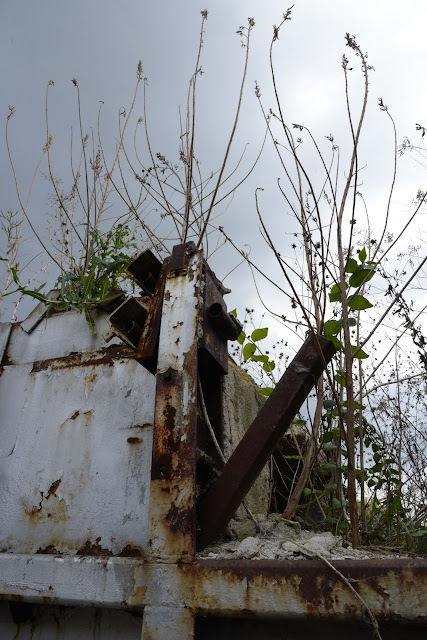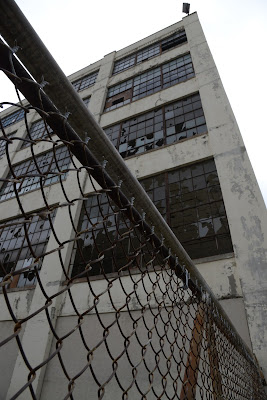Thursday, November 17, 2016
Saturday, November 12, 2016
Sunday, November 6, 2016
Project 6 (Man vs Nature): Progress
Saturday, November 5, 2016
Sunday, October 30, 2016
Project 6 Proposals
Journey to Antarctica
I recently discovered that I have a once-in-a-lifetime opportunity to travel to Antarctica, thanks to my sister who is a travel agent and is taking me along on her business trip. I would like to document this trip, both in the preparation of the trip, which is by far more extensive than any other trip I've ever taken and in the actual journey to Antarctica, which involves flying from Cincinnati to Atlanta and then to Santiago, Chile. Once in Chile, after a short visit there, we travel to the southern most part of Chile to board the ship that will take us, via a one day voyage at sea, to the continent of Antarctica. I will obviously document the actual experience of Antarctica for my own personal interest, but for this project I would like to document the preparation, anticipation, and the actual journey to our final destination in particular.
Decayed and De-industrialized
I've always been intrigued by things and buildings that are falling apart, worn, weathered, and forgotten. In this project I would like to explore the concept of decay and de-industrialization by photographing decayed and dilapidated buildings around Cincinnati and Northern Kentucky. It is easy to focus on the areas around of town that are prosperous and booming like OTR and the Banks, but these abandoned and neglected buildings and areas have their own intriguing duality of what was and what it has become. And how the surroundings, people and neglect have forced these once thriving areas into decay. In this some shots will revist the first assignment (abstract), whereas others will definitely highlight depth of field and indoor/outdoor lighting. I would also like to experiment with some long exposure night photography if the opportunity presents itself.
Man vs. Nature
I like the juxtaposition of the man made world and the nature world and how they often fight with one another. In the case of abandoned areas and neglected buildings it is almost always nature that wins and takes over. The contrast between the hard, starkness that usually represents the man made world and the more vibrant and fluid qualities of the nature world will create a great contrast in textures, colors and lines.
- Lay out of gear on the packing list
- Shopping for the required apparel
- At the airport
- In flight or taking off/landing
- In Chile
- Boarding the ship
- Finally reaching Antarctica
Decayed and De-industrialized
I've always been intrigued by things and buildings that are falling apart, worn, weathered, and forgotten. In this project I would like to explore the concept of decay and de-industrialization by photographing decayed and dilapidated buildings around Cincinnati and Northern Kentucky. It is easy to focus on the areas around of town that are prosperous and booming like OTR and the Banks, but these abandoned and neglected buildings and areas have their own intriguing duality of what was and what it has become. And how the surroundings, people and neglect have forced these once thriving areas into decay. In this some shots will revist the first assignment (abstract), whereas others will definitely highlight depth of field and indoor/outdoor lighting. I would also like to experiment with some long exposure night photography if the opportunity presents itself.
- Broken windows
- Peeling paint
- Rust
- Chain-link fence (DOF - building behind fence)
- Shots from the outside/in and inside/out
- How the surrounding area reflects this de-industrialization
Man vs. Nature
I like the juxtaposition of the man made world and the nature world and how they often fight with one another. In the case of abandoned areas and neglected buildings it is almost always nature that wins and takes over. The contrast between the hard, starkness that usually represents the man made world and the more vibrant and fluid qualities of the nature world will create a great contrast in textures, colors and lines.
- Greenhouse over taken by nature
- Dis-used rail road - overgrown tracks
- Trees and overgrown inside an old building
- Ivy/overgrowth crawling up the side of a brick building
- Ghost ship in Lawrenceburg, IN
Henri Cartier-Bresson - Online Research
 |
| MEXICO. Mexico City. Prostituées. Calle Cuauhtemoctzin. 1934. (Photo from Magnum Photos) I choose this image because both its composition and its subject are very intriguing. The photo has great contrast; in the texture of the door compared to the small strip of darkness to the left that shows a very small glimpse of what's behind the door without really showing much of anything, and the rough texture of the wall beside the subjects head (on the right). There is also wonderful contrast in the subject herself, the darkness of her hair, lips and her eyes against the skin on her face, which really gives her face a haunting quality. What is most intriguing here is how the subject, a prostitute, is popping out of this door and the view only sees the upper third of her body. Her suggestive pose really helps the viewer to have a sense that this is a 'working woman". Her crimped hair and lipstick also give a cue to her profession. But it is the darkness under eyes and something tentative in her stare that give me the impression she has had a rough life and make me wonder what has brought her into this profession. Is it because of hardship, because she has no other options? |
 |
| INDIA. Delhi. 1948. The train carrying Gandhi's ashes to the river Ganges, where they were to be scattered. Crowds lined the railway tracks to see and touch Gandhi's ashes, and pay a last tribute to their leader. (Photo from Magnum Photos) I chose this photograph because of the intense emotion and the sense of loss and even panic you get from the crowd as they say goodbye and pay their respects to Gandhi. Even without knowing this train is carrying the Gandhi's ashes, you get a sense of urgency as the massive crowd push toward the train and cling to it. The reaching arms and pained faces give you a sense that this is not a normal train, that their is an importance to it. And once you know why they are packed in around this train, you get a sense of the importance that Gandhi has played it their lives and amongst the looks of loss and pain, you also get a sense of shock, hinting to the face he was assassinated. There is great contrast in this photo, the lightness at the top of the image and its relative emptiness compared to the full, packed bottom of the photo and the shadow cast from the large train there. The people create their own texture which the eye is immediately drawn to, mainly due the shallow depth of field with the foreground being in focus. As you examine the photograph further you begin to see the individual faces in the packed crowd and the emotions of panic, loss, pain and confusion you see there. |
Subscribe to:
Posts (Atom)
















































